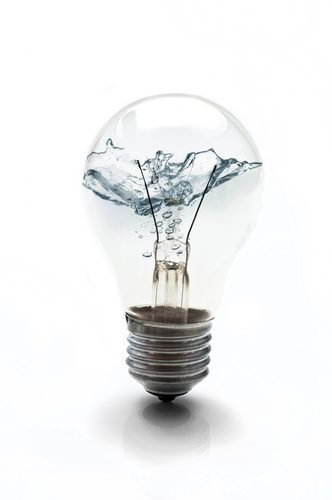 |
Water and energy have long been interconnected in the United States, but recently the Department of Energy (DOE) recognized that climatic and weather events as well as new energy development practices warrant a new look at the water-energy nexus, and what we can do to ensure its long-term viability.
In a new report titled “The Water-Energy Nexus: Challenges and Opportunities” the DOE pinpoints six strategic pillars to address the water-energy nexus, which the DOE says is integral to two of its priorities – climate change and energy security.” These six pillars are:
1. Optimize the freshwater efficiency of energy production, electricity generation, and end use systems, 2. Optimize the energy efficiency of water management, treatment, distribution, and end use systems,
3. Enhance the reliability and resilience of energy and water systems
4. Increase safe and productive use of nontraditional water sources
5. Promote responsible energy operations with respect to water quality, ecosystem, and seismic impacts
6. Exploit productive synergies among water and energy systems.
According to the DOE, these six points are intended to provide the foundation for coordinating ongoing research and development (R&D) activities that invite collaboration with other federal, state, tribal, and local agencies, as well as private companies, non-governmental organizations, universities, and international governments, to meet and solve the water-energy nexus challenges ahead.
Join us on August 27 for a practical look at the scientific and technological aspects of the many new changes for power plants and other facilities under Section 316(b) led by a top expert in the field. Register now.
The first challenge is the fact that in our current system we need water to produce energy and we need energy to deliver and treat water. Water’s thermal characteristics and properties make it an ideal medium for both storing and transferring energy and the historic abundance and low cost of water have helped it to become the logical choice for thermal uses in energy production. Water’s effectiveness as a solvent also makes it useful in a variety of energy-related capacities from cleaning solar panels to hydraulic fracturing for natural gas to growing feedstocks for biofuels. Water used in some processes, however, must be treated and that takes energy, sometimes a lot of energy, such as in oil and gas operations and municipal wastewater treatment.
Another challenge the DOE considered is climate change that can, and is, altering the availability and predictability of water resources. During the past 100 years almost the entire country has seen temperatures rise and as precipitation patterns shift, each region of the country will be impacted differently. For example, less precipitation in some areas may force energy producers to rely on groundwater rather than surface water, but already some areas are withdrawing more groundwater than is being replenished. The DOE notes that 13 percent of thermoelectric cooling systems currently use groundwater, but 30 percent of planned cooling systems are expected to use groundwater, giving cause for concern.
Join us for an in-depth presentation on new EPA regulations for existing cooling water intakes. This webinar will provide an overview of the regulations, and how to ensure these requirements are conducted and completed on time. Register now.
Also challenging is the need to align decision making among stakeholders in energy and water resources to enable “policy harmonization” and synergistic approaches that work for both sides. This is a complex undertaking that will involve every level of government in the United State as well as interaction with neighboring countries on international treaties. Among the many state and regional challenges are water rights and permitting oversight, prior appropriation doctrine, riparian doctrine, and groundwater allocation policies already in place.
To begin to address these challenges, the DOE is advancing what it calls “technology research, development, demonstration, and deployment (RDD&D)” on a variety of fronts that include advanced materials, process efficiency, waste recovery, cooling technologies, and alternative fluids. Tomorrow we will take a closer look at what each of these areas offers as well as other opportunities to maintain and support the water-energy nexus.
